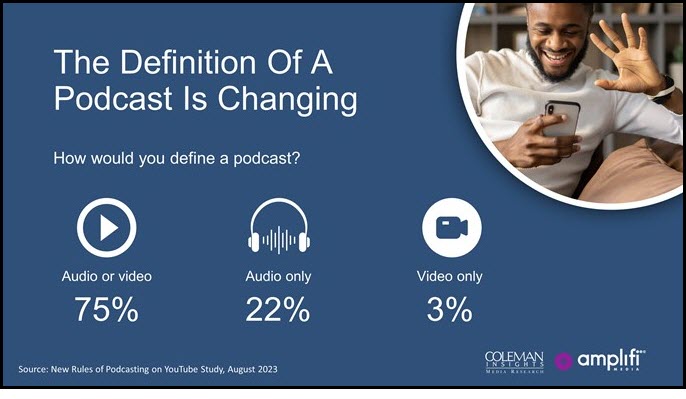The Pew Research Center recently completed a survey for National Radio Day about today’s radio industry and the people who listen to its broadcasts.
My own radio career has spanned over 50 years, and in that time I’ve witnessed considerable change. So, where are we now in 2023?
82% of Americans Over The Age of 12 Listen to Radio
While the 82% number of weekly listeners to radio is outstanding, in today’s competitive media world, that percentage of weekly listening is down from 92% in 2009, according to Nielsen.
Last week, Edison Research published new research showing that Share of All Audio Listening now ranks “On-Demand Platforms” ahead of “Linear Platforms,” the latter being sources such as over-the-air radio, radio streams, radio services, etc. People today prefer to listen to media on their time schedule, like podcasts, owned music, paid streaming services etc.
47% of Adults Get Their News From Radio (at least sometimes)
Pew Research says, that this percentage has remained relatively constant in recent years. However, just 7% of adults said that they prefer getting their news from radio broadcasts.
20% of Adults Get Local News From Radio
When FORD announced it would be ending AM radio in its vehicles, the radio industry was quick to mount an assault on Congress to have AM radio stay in all cars and trucks, initiating the “AM for Every Vehicle Act.”
When the town of Lahaina, Maui was going up in flames, news outlets were asking the head of Maui’s emergency management agency why he didn’t sound the warning sirens, but no one asked why it took that same agency 48 hours to reach out to local radio stations to spread the word.
38% of adults get their local news from TV, 17% from newspapers and 12% from the internet or other types of outlets.
Share of Adults Listening to Podcasts is UP
A decade ago, just 12% of Americans over the age of 12 said they had listened to a podcast in the past month, but in 2023 that number is 42%.
Podcasts began as an audio only, on-demand service, but today 22% of the top 250 podcasts include video which is posted on YouTube, finds a Podtrac study. In fact, today 75% of all podcast consumers say that podcasts are both audio and video, according to Coleman Insights.
Just as the term “podcast” can now refer to any on-demand audio/video content, I found that my university students, even a decade ago, thought all audio content as being “radio.”
Clearly, different generations use the same words, but what they mean in 2023 – and which demographic is using them – the meaning can be totally different.
Radio Strong
In spite of the many challenges facing radio today, the medium still reaches more Americans every week than any other platform measured by The Nielsen Company.
For the industry to stay strong and grow, it must listen to its audience and deliver what it is asking for, in the way they wish to receive it.
NPR, for example, makes everything they broadcast available on its website, social media, podcasts, and video-on-demand platforms.
“Radio’s strongest asset is its connection to a community,” says Donna Halper, an associate professor of communication and media studies at Lesley University. Halper believes that the “digital disruption has enhanced our connection to our listeners and to our community. It has kept radio on its feet.”
But it all comes down to the attitude of the people who own and operate radio stations in America. Managed properly, radio can stay strong and vital in the years ahead.
“Whether you think you can, or you think you can’t – you’re right.”
-Henry Ford



 Everything old is new again. I’m sure you’ve heard the phrase. “Everything old is new again” was the title of a song in the movie musical “All That Jazz.” Part of the lyrics to this Peter Allen/Carole Bayer Sager song include:
Everything old is new again. I’m sure you’ve heard the phrase. “Everything old is new again” was the title of a song in the movie musical “All That Jazz.” Part of the lyrics to this Peter Allen/Carole Bayer Sager song include: Radio has been here many times in it’s almost 100-year history before.
Radio has been here many times in it’s almost 100-year history before.